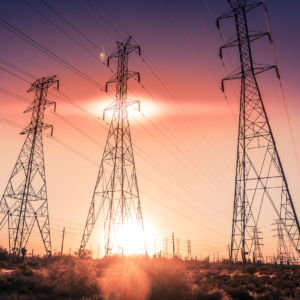“I’ll be OK in isolation and I have plenty of food and supplies. But what worries me most is what happens if we lose power. I don’t think I could survive that on top of everything else.” — Ann Lynn Pischea (age 80, Lansing, Mich.)
My mother’s words seemed practical when she said them last week. This week, they sound eerily prescient, as I woke Monday morning to the news of the tornadoes that ripped through the South, killing at least 26 and leaving 1.3 million without electricity.
In a crisis like the global COVID-19 pandemic, we know that access to basics like food, water, electricity and medical care is essential to protect and preserve life.
Yet, our critical infrastructure for too long has been neglected — and we are now reliant on aging infrastructure and outdated technology to carry us through the worst global crisis since at least World War II.
As we all react to this new normal and question how we could have prepared better, it’s past time to consider that much like the warnings of epidemiologists about a potential pandemic that went unheeded, energy experts have been raising red flags about the vulnerability of our nation’s electricity system for years.
Whether it be extreme weather or a domestic or global terrorist event, my mother’s fear is closer to reality than she knows.
To effectively meet this challenge and prepare for future crises, we must invest in a more adaptable grid solution, one that emphasizes a diversified energy portfolio of baseload and renewable sources and is structured around a more flexible workforce.
As we look to the future, policymakers and innovators alike must embrace accelerated integration of new and decentralized energy sources to ensure a safe and reliable grid.
While this crisis has forced the federal government to recognize it may be left vulnerable in emergencies without access to, and oversight of, critical supply chains, consumers recognize now more than ever that access to power is critical and they want to choose how to produce and use power in their own lives.
According to recent polling conducted by Public Opinion Strategies, 87 percent of voters said they support more competition in electricity markets that would allow people to choose where they buy their power. Among conservatives, this number jumps to 91 percent in favor.
Unfortunately, regulatory hurdles and laws protecting legacy monopoly utilities make it difficult for the private sector, beyond some large corporate purchasers, to enjoy these benefits.
Additionally, we should all be able to protect our families and our homes by generating our own power, whether using the sun, wind, hydro or manure. Currently, in regulated states a single monopoly utility has the ultimate decision whether you can take those protective actions or not.
This should be a matter of property rights — not the whims of a utility accountant.
If the COVID-19 pandemic is prolonged, or a second wave of the virus hits later this year — either in hurricane season or as wintry weather descends on the nation — traditional grid operations may indeed be threatened.
Our current power system may sustain and maintain operations through certain struggles like major storms (although as we have seen, even those weather events can strain our aging and ill-equipped grid). But when multiple unexpected events strike at once, the lack of options and flexibility with our current electric system can cause our grid to become strained to the point of breaking.
Those who are most vulnerable to this pandemic, folks like my mother who are elderly and/or have underlying medical conditions, are also the most vulnerable in a power interruption.
We’re already dealing with a breakdown of our health system and a turbulent economic downturn — and we don’t know where this will ultimately take us. The potential devastation of a long-term power outage on those populations would be just as staggering as the coronavirus.
Today, innovations in our power system make it possible to diversify and decentralize energy access through microgrids, distributed energy resources like rooftop solar, battery storage, and community solar programs.
But policies to address our aging electricity infrastructure should also include providing consumers the power to source cleaner, more renewable energy.
Taken together, these efforts can ease the burden on existing producers in the mix and decentralize power sources, thereby lessening the strain on any one part of our grid.

